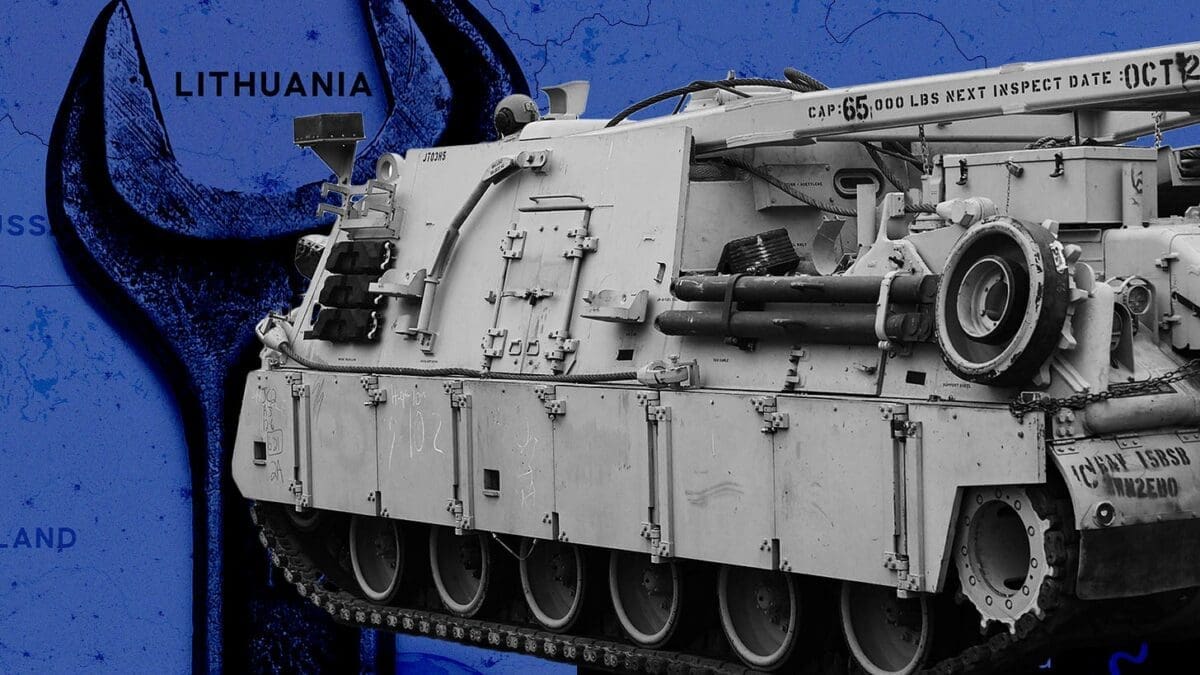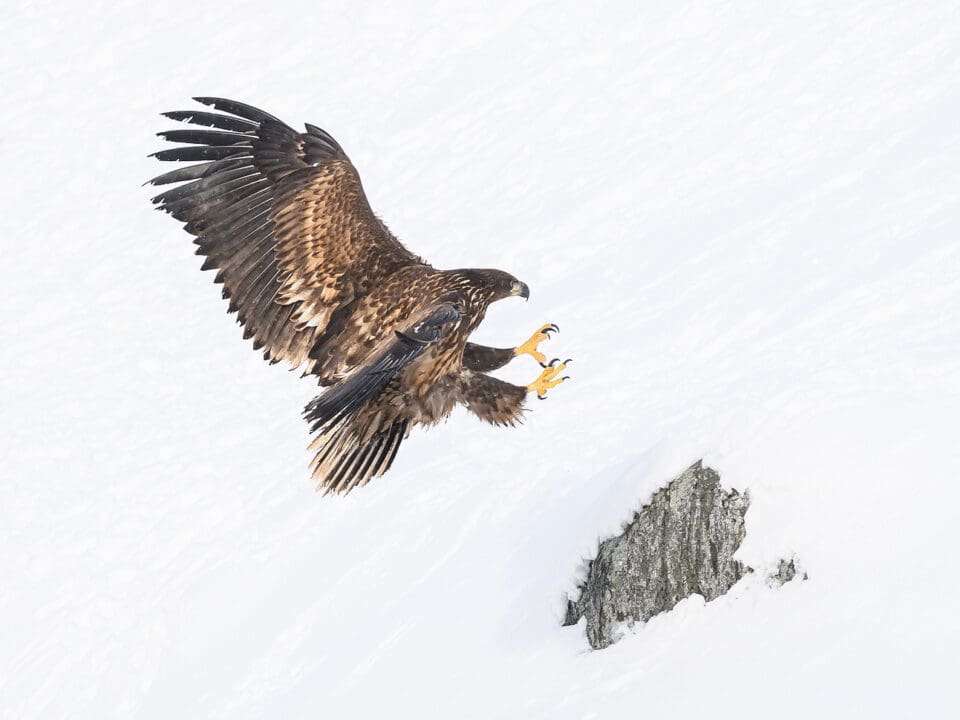Judge orders White House to restore legal aid to unaccompanied migrant children
April 2, 2025
Today is Trump’s ‘Liberation Day.’ What does that mean for tariffs?
April 2, 2025IN EVERY ARMORED FORMATION I COMMANDED—and there were many—there were a few soldiers who never made headlines, never sought the limelight, and never once complained about the cold, the rain, the mud, the grease, or the long nights spent working on hulking steel beasts. They were the “wrenches.”
That’s what tankers call the mechanics, a term of endearment, like calling a medic “doc” or a cook “spoon.” In the cavalry, where our mounts are Abrams tanks and Bradley Fighting Vehicles weighing upwards of 70 tons, the “wrench” is the soldier who pulls your stuck vehicle out of the bog and fixes things when they break. Without them, tanks don’t roll, tracks stay broken, and formations stall.
Last week in Lithuania, we lost four of these quiet professionals. Soldiers from the 1st Armored Brigade Combat Team, 3rd Infantry Division, were conducting a mission to repair and tow an immobilized tactical vehicle when their M88A2 Hercules armored recovery vehicle drove into a peat bog near Pabradė and became submerged. After a complex recovery operation involving U.S., Lithuanian, Estonian, and Polish forces, their bodies were recovered.
The Hercules is a beast in its own right: nearly 70 tons, with a powerful winch system, a 35-ton boom, and armor thick enough to survive near the front lines (not at all a “toy”). When a tank goes down in the mud or throws a track under fire, it’s the wrenches in their Hercules who go out to bring it back. Just like medics who run to injured soldiers, ignoring their own safety, it’s the wrenches who maneuver to the broken vehicles to get it and its crew to safety and back into the fight.
It’s easy to focus on the sharp end of the spear—the foot soldiers or the tankers who fire and maneuver. But every operation, every hour of combat power rests on a foundation built by maintainers. They don’t fire the main gun, but they make sure it fires. They don’t maneuver on the objective, but they make sure the vehicle gets there. In armor units, we know this truth intimately. We depend on our wrenches the way we depend on medics, spoons, and the logisticians who deliver fuel and ammo.
Doing maintenance training in the field is a necessity. We practice how we fight—and we don’t plan to fight in a dry, insulated garage. Wrenches practice in every environment: snow, sleet, heat, rain; often in the dark, with limited tools, and always against the clock. I’ve seen mechanics cannibalize parts from broken vehicles so another one could get going again and crews could continue training. I’ve seen wrenches burn through the night under the toughest conditions—elated just to be offered a lukewarm cup of coffee—so that the company they support can roll as expected before dawn. And their work is never done: There’s always another broken vehicle, and they approach it eagerly, with rolled up sleeves and covered head-to-toe with grease. Because when a vehicle breaks down during training, it’s an inconvenience. But if it breaks down during combat, it can mean death.
SOME MIGHT WONDER WHY these American soldiers were training in Lithuania in the first place. It’s because the Lithuanians are our allies, and we train with each other. I’ve been to the training area where these four soldiers were practicing. In fact, I visited all three Baltic states in 2012—Estonia, Latvia, and Lithuania—as part of a defense engagement program. Each country was serious, professional, and proud to be a part of NATO. While in Estonia, I visited the grave of a young soldier, Sgt. Andres Nulamae, who had been assigned to our command in Baghdad. The Baltic soldiers were some of our best, and they sacrificed alongside us. Because that’s what allies do.
But something about Lithuania struck me when I visited over a decade ago. Like other European nations, I was often treated to a cultural program after an official visit ended. Lithuania was no exception. In Vilnius, a young woman maybe in maybe her early twenties gave me a guided tour of their capital. During a discussion she told me how, as a small girl, she watched her father stand with thousands of others in the city square in 1991 as Lithuanian civilians stared down the Soviet military in their pursuit of freedom and independence. Her father was lucky not to have been one of the 14 civilians killed—instead, a Soviet tank crushed his foot, and friends carried him home. His wife pleaded with him not to return to the protests, reminding him of their two young children. But he responded, “I must go out there because I have two children who must be free from the Russians.” That story left a mark on me. Lithuania’s fight for freedom isn’t distant history; it’s a living memory that shapes their national character and their commitment to sovereignty, just like Ukraine’s. It’s recent and raw. My guide’s voice didn’t tremble as she told me the story—but I got emotional listening to it.
The memory of 14 unarmed Lithuanians giving their lives to face down Russian armor in the cold days of January 1991 lives not just in their history books but in their bones. It’s why Lithuania practically beat down NATO’s door before being allowed to join in 2004. And it’s why they’ve contributed forces to U.S. operations in Iraq and Afghanistan, supported allied deployments in their own country, and welcomed our training rotations with professionalism and warmth. It’s a big part of the reason they’re among the most generous supporters of Ukraine, even as the United States is faltering.
TODAY, LITHUANIA ALSO FINDS ITSELF in a position of immense strategic importance—and danger. Along with Poland, it flanks the Suwałki Gap, a narrow corridor running between Poland and Lithuania that separates Belarus from Russia’s heavily militarized exclave in Kaliningrad. In military terms, it’s a choke point. In political terms, it’s possibly the next target. If Putin ever decides to further test NATO’s resolve, Lithuania is a likely victim, not because it’s weak—but because it’s essential. Seizing the Suwałki Gap could cut off the Baltic States from land reinforcement, isolating them and presenting the world with a fait accompli. It’s the kind of gamble a cornered autocrat like Putin might take.
That’s why our soldiers—infantry, armor, artillery, and yes, wrenches—train with other nations in Lithuania. Deterrence isn’t just a strategy; it’s a presence that builds trust. It’s the sound of tank engines firing up in the early morning, the sight of NATO armor crossing a frozen training range, and the knowledge that if a bolt shears or a track throws, there’s someone there who knows exactly what to do.
The recovery operation that followed this recent tragedy speaks volumes about the strength of our alliances. Over the course of six difficult days, American, Lithuanian, and Polish forces worked side by side to recover the Hercules from the peat bog. It was a grueling, multinational effort involving logisticians, mechanics, and engineers. The terrain was waterlogged, deep, and unforgiving—but they kept at it. That’s what allies do. They show up when it’s hard.
There is a quiet cost to readiness, and these soldiers—those who sacrificed their lives during training and those who stayed with it during recovery operations—paid it in full. Because alliances are not just pieces of paper. They are people who roll up their sleeves and go out to do the hard jobs. Allies are built on shared values, common purpose, and the kind of moral clarity that leads a Lithuanian father to walk back into a square facing Russian tanks, not despite his children—but because of them.
We remember the fallen not only to mourn them, but to remind ourselves of the kind of ally we aspire to be. The kind that shows up, holds fast, and never lets the mission fail.
Great Job Mark Hertling & the Team @ The Bulwark Source link for sharing this story.






